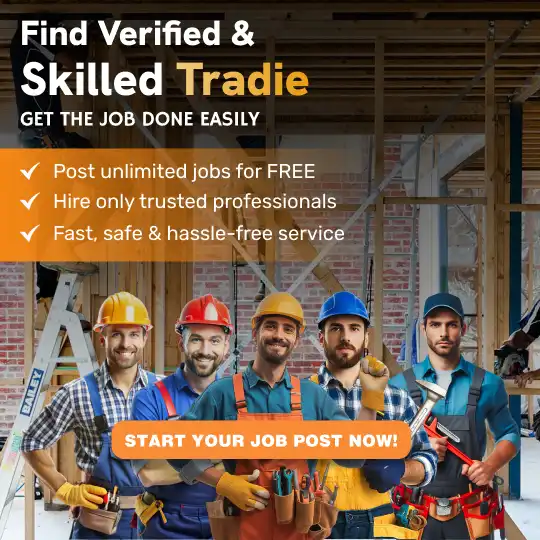Home Extensions vs Knockdown-Rebuild: What Tradies Suggest

As Australian homeowners look to create more space, increase comfort, or modernise their properties, one major question often arises: Should you go for a home extension or consider a knockdown-rebuild?
It’s a tough decision, one that impacts your time, budget, lifestyle, and long-term property value. This blog dives deep into both options and, most importantly, shares real insights and tradie advice to help you make a confident, well-informed choice.
Whether you're upgrading for your growing family, improving your home's design, or future-proofing your space, understanding the difference between a home extension and a knockdown rebuild is the first step.
Understanding the Basics of Home Extension and Rebuild
Before diving into the pros, cons, and comparisons, it's crucial to fully understand what home extensions and knockdown rebuilds actually involve. These two renovation strategies are fundamentally different in terms of scale, planning, cost, and outcome, so having a clear picture from the start will help guide your decision.
What Is a Home Extension?
A home extension is exactly what it sounds like, adding extra space to your existing home. This could mean expanding outward into your yard, building upward with a second storey, or even extending a particular section like the kitchen or living room.
Home extensions are ideal for homeowners who love their current location and are happy with the original structure but just need more space. Whether it’s for a growing family, a new home office, or simply modernising an older layout, extensions allow you to improve functionality while keeping the original character of your home intact.
What Is a Knockdown-Rebuild?
A knockdown rebuild involves demolishing your current home and starting fresh by building a completely new house on the same block of land. It might sound like an extreme step, but for many Australians, especially those living in older homes or outdated buildsit’s becoming an increasingly popular option.
This approach allows you to design a modern, energy-efficient home from scratch without compromising on layout or functionality. From smart wiring to open-plan living, skylights, and high-performance insulation, you can customise every inch of your new home to suit your exact needs and lifestyle.
Key Factors to Consider Before Choosing Between Home Extension and Rebuild
It’s essential to weigh the core differences between extending and rebuilding. Your choice will not only affect your home’s layout but also your budget, timeline, and future resale potential.
Let’s break down the key factors that tradies say every homeowner should evaluate carefully.
1. Timeline and Project Disruption
One of the first things tradies highlight is the timeline and impact on daily life.
- Home extensions tend to take less time overall, especially if it’s a single-room addition or ground-level project. However, since the rest of the house remains occupied, you'll likely deal with ongoing noise, dust, and disruptions.
- In contrast, a knockdown rebuild usually requires you to move out completely, but once work begins, the timeline is often more predictable. There's no guessing about hidden structural issues, which commonly delay renovations.
Tradie tip for home renovation trends: If you can afford to live elsewhere temporarily and want to avoid continuous disruptions, a rebuild might actually be smoother overall.
2. Design Flexibility and Structural Limitations
When it comes to creativity and modernisation, knockdown rebuilds win hands down.
- Extensions are limited by the original structure’s foundation, layout, and materials. You can certainly get creative, but you’ll often face constraints like rooflines, plumbing, and load-bearing walls.
- With a new build, you start with a blank canvas. Want an open-plan kitchen, skylights, passive solar design, or eco-friendly finishes? All are easier and often cheaper to implement in a fresh design than retrofitting into an older frame.
According to professionals with best tradie skills, modern design elements integrate better in a new build, especially with advances in materials and layouts.
3. Impact on Property Value
Adding space or modernising your home will likely increase its value but how much?
- A home extension may raise your property value depending on the quality, design, and how well it blends with the original structure. However, poorly integrated extensions can do more harm than good.
- Knockdown rebuilds, especially those that follow current trends and energy codes, often lead to a substantial boost in market value. Buyers love newer homes with upgraded layouts and sustainable features.
If you’re planning to sell within 5–10 years, a rebuild may give you a better return on investment.
4. Council Approvals, Permits & Regulations
No matter your choice, approvals are a must—but the process varies:
- Home extensions generally require development approval (DA) or complying development certificates (CDC), depending on your area. If you're working within your existing home's footprint, the process may be quicker.
- A knockdown rebuild, on the other hand, involves demolition permits, new building approvals, and sometimes environmental reports. It’s more paperwork, but often leads to better design freedom once done.
You can choose local tradie. Why choose a local tradie? Local experts understand your council’s regulations and can fast-track approvals without delays.
5. Sustainability and Energy Efficiency
In today’s world, energy efficiency isn’t just a bonus, it’s a priority.
- Extending an old house means you're often working around outdated insulation, window placements, and inefficient energy systems. You can retrofit, but it’s costly.
- Rebuilding allows you to implement modern sustainability standards from the ground up, double-glazed windows, solar panels, energy-efficient appliances, better ventilation, and smart layouts to minimise heating/cooling costs.
If you're eco-conscious, a knockdown rebuild gives you the best starting point.
6. Emotional and Lifestyle Considerations
Practicality aside, tradies often remind homeowners to factor in their emotional connection and lifestyle needs.
- Home extensions work well if you’re emotionally attached to your current home and neighbourhood. It’s a great option when you want to preserve sentimental features or maintain community ties.
- If your lifestyle has changed, like growing kids, remote work needs, or accessibility concerns, a knockdown rebuild gives you a chance to create a space that truly fits your future.
- Living through a renovation can be taxing. If you prefer a clean slate and a faster transformation, rebuilding may be the more comfortable path.
Tradie tip for home upgrades: Think beyond bricks and mortar, choose the option that supports your evolving lifestyle and personal comfort.
Ultimately, the decision between home extensions and a knockdown rebuild isn’t one-size-fits-all. It depends on your goals, budget, lifestyle, and the current condition of your property.
Cost Comparison: Extension vs Rebuild
Cost is often the deciding factor in the renovate or rebuild home decision. While both come with their own expenses, here's a comparison based on current averages across Australia:
| Feature/Aspect | Home Extension Cost (Estimate) | Knockdown Rebuild Cost (Estimate) |
| Average Price per m² | $2,000 – $4,000 | $2,500 – $4,500 |
| Design & Planning Fees | Lower (reusing some elements) | Higher (requires full planning) |
| Permit & Approval Costs | $5,000 – $10,000 | $10,000 – $20,000 |
| Living Expenses During Work | May stay at home (minor disruption) | Temporary relocation required |
| Ongoing Maintenance After Work | Depends on existing house condition | Minimal (everything is brand new) |
| Total Cost (avg 3-bed home) | $150,000 – $400,000 | $300,000 – $800,000 |
It’s essential to compare home extension costs vs rebuild not just in terms of upfront spend, but also long-term performance, maintenance, and resale value.
Remember, tradie cost changes depending on materials, location, permits, and labour availability. Always get quotes from cost-effective tradies in Australia before committing.
Tradies’ Final Verdict: What They Suggest
When it comes to major home upgrades, who better to trust than the multi-skilled tradies who work on homes every day? Seasoned and licensed tradies bring hands-on experience to the table, and their insight can help homeowners avoid costly mistakes.
Let’s break down the scenarios where tradies typically lean towards one over the other.
When to Go for a Home Extension
If your existing home is structurally sound and doesn’t require major foundation or roofing repairs, most tradies would say a home extension can be a smart move. It allows you to expand your living space while retaining the sentimental and architectural value of the original structure. Here’s when it’s worth considering:
- Your existing structure is in great condition – No major cracks, sagging floors, or drainage problems.
- You love the charm of your current home – Character features like high ceilings, timber floors, or decorative facades can be hard to replicate.
- Your budget is tight but you’re open to renovating in stages – Extensions can often be done one room or level at a time, reducing upfront costs.
- You have a strong emotional attachment to your home or neighbourhood – Sometimes staying rooted matters more than starting fresh.
Tradies also mention that extensions make more sense when your zoning restrictions or block size don’t easily allow for a complete rebuild, or when you want to maintain the surrounding landscape and garden.
When a Knockdown Rebuild Makes More Sense
On the other hand, if your current home has outdated infrastructure or your renovation dreams require tearing down more than half the original build, most tradies agree—it might be time for a knockdown rebuild. Here's why this route can be smarter in the long run:
- The existing home has foundational or structural issues – Older homes with uneven flooring, leaky roofing, or damp walls are often more expensive to fix than to replace.
- You want complete design freedom – Building from scratch means no awkward corners or compromise on layout—you get the home you've always dreamed of.
- Energy efficiency and modern features are non-negotiable – New homes meet today’s energy standards and support future-proof technologies like solar integration, thermal insulation, and double-glazed windows.
- You’re focused on long-term investment and resale – Buyers love modern homes with warranties, energy ratings, and compliance with current codes.
In the ongoing debate of knockdown rebuild vs extension in Australia, experienced tradies often suggest thinking long-term. If your house is over 40 years old or requires more than cosmetic improvements, the cost of upgrading it to today’s standards could rival, if not exceed, the cost of building a new home altogether.
Why Homeowners Need the Trusted Tradie Network for Big Home Decisions
Making a decision as big as whether to renovate or rebuild can feel overwhelming. That’s where the Trusted Tradie Network steps in.
With a carefully selected pool of licensed professionals across multiple trades, the network connects you to the right people for the job, whether it’s Simple Home Repairs, full home extensions, or complete knockdown-rebuilds.
Here's how Trusted Tradie Network helps:
- Access to experienced tradies for honest advice and accurate quotes
- Transparent reviews, portfolios, and credentials
- Guidance on design, permits, sustainability, and cost
- Seamless transition from consultation to project execution
From home maintenance services to large-scale transformations, you can count on Trusted Tradie to back your decision with real experience, not guesswork.
Final Wrap-Up
Choosing between a home extension and a knockdown rebuild is more than a construction choice, it’s a personal, financial, and long-term lifestyle decision. Every home is different, and what works for one family may not work for another.
By weighing key factors like timeline, cost, value, and sustainability, and seeking qualified tradie input, you’ll be well-equipped to make the right call. Whether you aim to preserve the past or build for the future, the choice is yours, just make sure it's an informed one.

